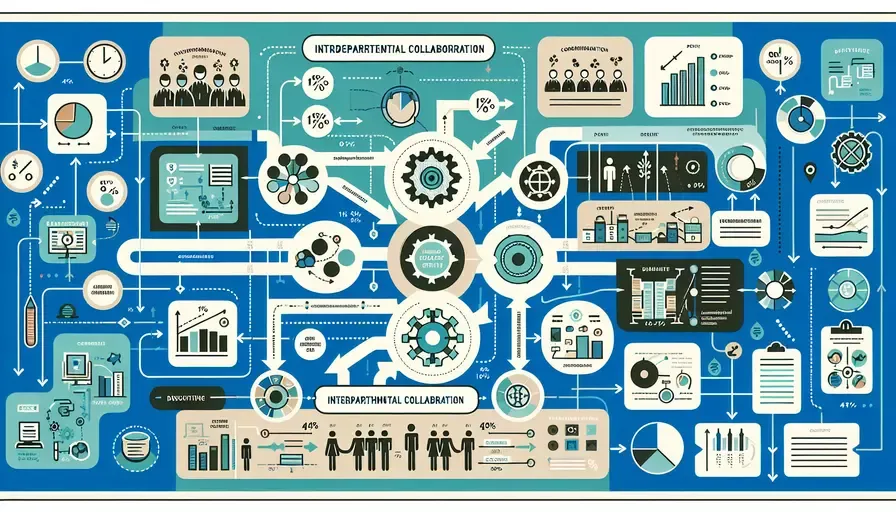The editor of Downcodes brings you a comprehensive interpretation of department collaboration. In modern organizations, departmental collaboration is no longer the icing on the cake, but the key to improving efficiency and promoting innovation. This article will delve into the definition and significance of department collaboration and its specific manifestations in improving business efficiency, promoting innovation, enhancing employee morale, improving problem-solving capabilities, and building organizational culture. Through rich case analysis, it will help you fully understand and effectively Implement departmental collaboration.

Departmental collaboration is defined as the effective cooperation between members of different departments within an organization on common tasks or projects. This process facilitates the sharing of information, knowledge and resources to achieve common business goals. The significance includes: 1. Enhance business efficiency, 2. Promote innovation, 3. Improve employee morale, 4. Enhance problem-solving capabilities, 5. Build a stronger organizational culture.
Let’s talk in detail about one of these points, how department collaboration can enhance business efficiency. In organizations, effective collaboration between departments often means greater flow of information and knowledge and faster decision-making processes. This is because when communication and collaboration between employees is smooth, they can share critical information faster, thus avoiding duplication of effort and misunderstandings. Collaboration can also help organizations allocate resources more efficiently, ensuring each department gets the support it needs, when it's needed.
1. Enhance business efficiency
Department collaboration can improve business efficiency in many ways. First, effective departmental collaboration can increase the speed of decision-making. When departments within an organization can effectively share information and knowledge, the decision-making process is typically faster and more accurate. In addition, departmental collaboration saves time and resources by avoiding duplication of effort and misunderstandings.
Secondly, departmental collaboration can also help organizations utilize and allocate resources more efficiently. This includes human resources, financial resources, and other material resources. Effective collaboration improves overall efficiency by ensuring each department gets the support it needs when it is needed.
2. Promote innovation
Departmental collaboration also helps foster innovation. When employees in different departments are able to share information, knowledge, and ideas, they have the potential to generate new, innovative solutions. This cross-department collaboration and communication can help organizations discover new opportunities and create unique products or services.
In addition, departmental collaboration can encourage employees to come up with new ideas by providing a shared, open environment. In such an environment, employees typically feel freer and more willing to share their opinions and innovative ideas.
3. Improve employee morale
Department collaboration can also improve employee morale and satisfaction. When employees feel that they are an important part of the organization and that their work is valued, they are generally more motivated and engaged at work. In addition, departmental collaboration can provide more opportunities for employees to participate in the decision-making process and increase their job satisfaction.
Department collaboration can also help build a stronger team spirit. When employees are able to work alongside colleagues from other departments on projects or tasks, they are more likely to build mutual trust and respect, resulting in stronger teams.
4. Enhanced problem-solving abilities
Departmental collaboration can also enhance an organization's problem-solving capabilities. When faced with complex problems or challenges, employees from different departments can bring different perspectives and expertise. This helps organizations understand and approach problems from multiple perspectives to find the most effective solutions.
Additionally, departmental collaboration can provide a platform where employees can share their experiences and best practices. This way, they can learn from the successes or failures of other departments, thereby improving their problem-solving skills.
5. Build a stronger organizational culture
Finally, departmental collaboration can also help build a stronger organizational culture. When employees can collaborate effectively across departments, they are more likely to understand and embrace the organization's values and goals. This can help organizations build a more inclusive and open culture that attracts and retains great employees.
Overall, departmental collaboration is crucial for any organization. It not only improves business efficiency, promotes innovation, improves employee morale, enhances problem-solving skills, but also helps build a stronger organizational culture. Therefore, every organization should strive to promote collaboration between departments to achieve these important benefits.
1. What is departmental collaboration?
Department collaboration refers to the process of cooperation and collaborative work between different departments. This kind of cooperation can involve various levels, including information sharing, resource allocation, task division, etc., aiming to achieve common goals and interests.
2. What is the significance of departmental collaboration?
The significance of departmental collaboration is to promote coordination and cooperation within the organization, thereby improving work efficiency and quality. Through collaboration between departments, various resources and professional knowledge can be better integrated, information exchange and sharing can be strengthened, the creativity and innovation capabilities of the team can be enhanced, and the development and success of the organization can be promoted.
3. How does departmental collaboration affect organizational performance?
The impact of departmental collaboration on organizational performance is positive. First, departmental collaboration can avoid information silos and waste of resources and improve work efficiency. Secondly, through collaboration, the professional knowledge and experience of different departments can be fully utilized and shared, thereby improving problem-solving and innovation capabilities. Finally, departmental collaboration can promote the cultivation of teamwork spirit, enhance employees' sense of belonging and cohesion, and help improve employee satisfaction and the overall performance of the organization.
I hope the analysis by the editor of Downcodes will be helpful to you! To learn more about organizational management, please continue to pay attention to Downcodes.